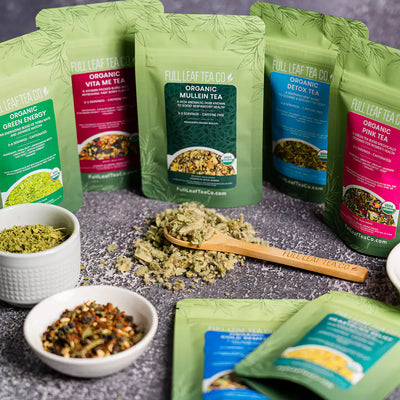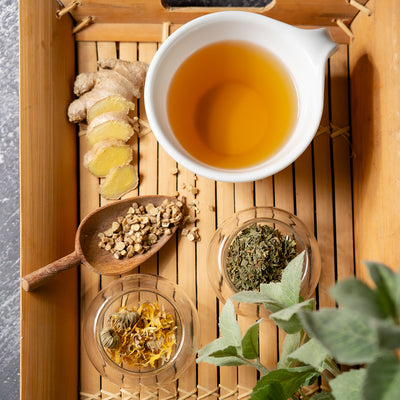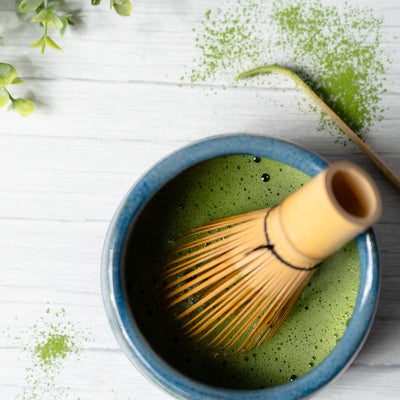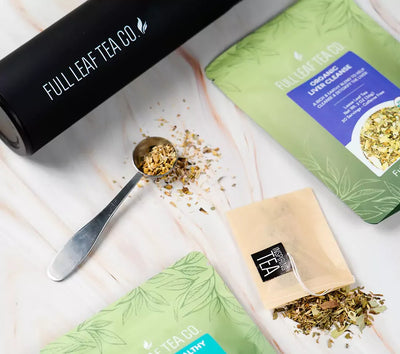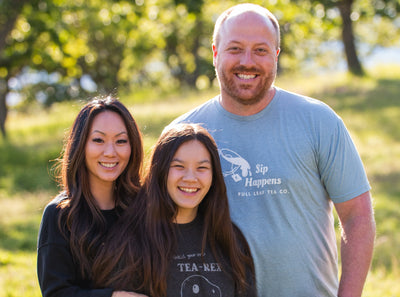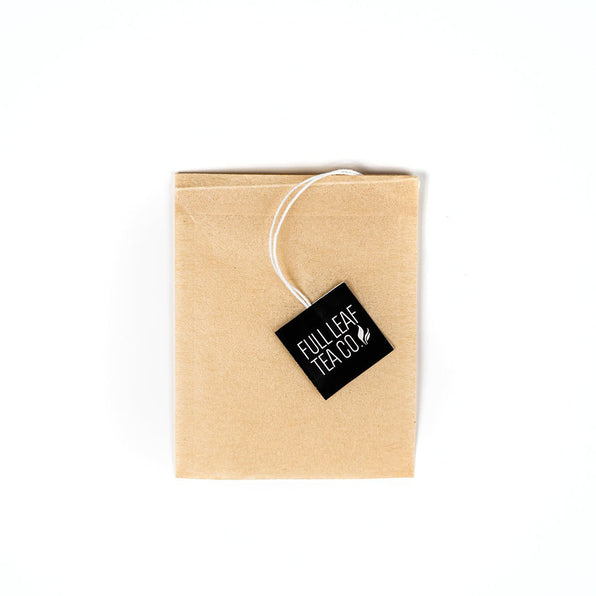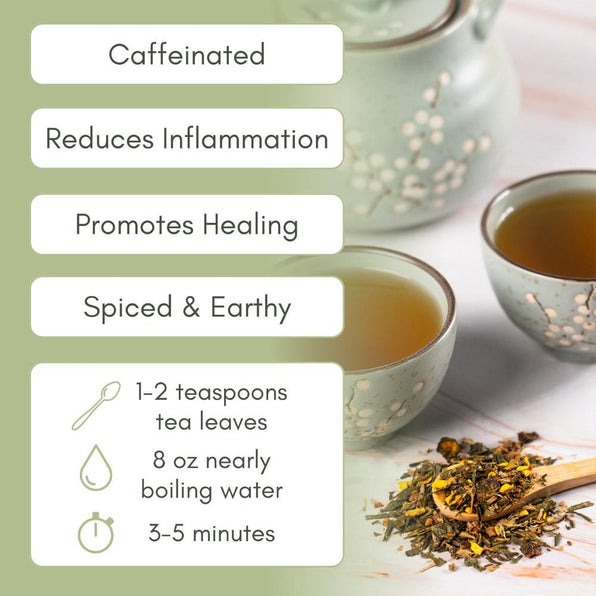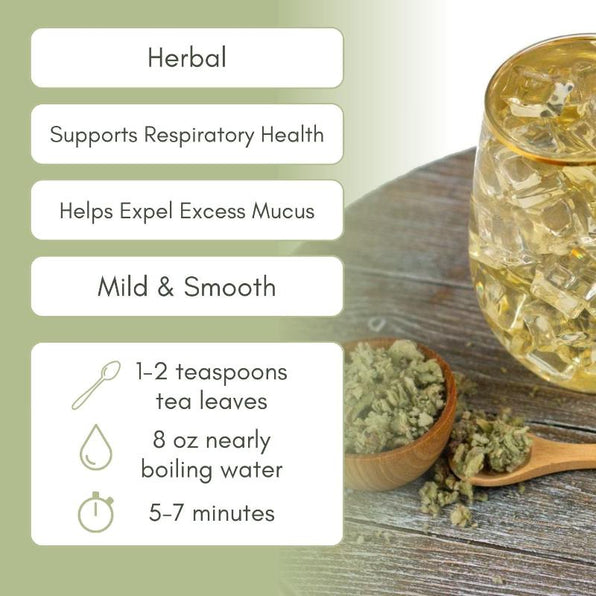Wormwood’s Place in Spooky Wellness
As Halloween approaches, certain herbs stir our imagination more than others. One of the most mysterious is wormwood—a plant entwined with folklore, healing traditions, and eerie superstition. Known for its bitter taste and powerful aroma, this herb has been both feared and revered throughout history. From its role in ancient rituals to its modern use in wellness teas, wormwood has long carried an air of the mystical. Making it a perfect focus for the Halloween season.
In this blog, we’ll explore the lore, wellness properties, and historical uses of this herb, along with a look at other herbs that share its haunting aura.
Table of contents
The Dark Lore of Wormwood
This herb's history is steeped in myth and superstition. In European folklore, this herb was thought to ward off evil spirits, ghosts, and even witches. It was often hung in doorways on All Hallows’ Eve to keep wandering souls at bay. In the Middle Ages, people believed that carrying this herb protected them from enchantments and possession.
The Bible also references wormwood as a symbol of sorrow and bitterness, adding to its dark reputation. Yet, paradoxically, it was also prized for protection and purification. Wormwood occasionally used to cleanse spaces of negative energy.

On Halloween, when the veil between worlds is said to be thinnest, wormwood is often associated with divination. Some traditions claim that burning this herb or drinking it could open the “second sight,” allowing one to glimpse spirits or foretell the future.
Wormwood in Halloween Magic
No herb fits better into a Halloween-themed apothecary than wormwood. Its name alone evokes a sense of mystery and dread. In spells and charms, it was often used to banish harmful forces, drive away nightmares, and protect travelers from dangerous encounters.
Victorian occultists sometimes paired wormwood with mugwort in dream pillows, said to enhance psychic visions. Wormwood was also an ingredient in old necromantic rituals—used by seers who sought to communicate with the dead during Samhain, the Celtic precursor to Halloween.
For those drawn to spooky herbal practices, wormwood remains a symbol of liminality—a plant that stands between wellness and warning, healing and haunting.
Wormwood for Wellness
Despite its ominous lore, wormwood is highly valued in herbal medicine. It is best known for supporting digestive health. The herb stimulates bile production, eases bloating, and helps the body process rich or heavy foods—perfect after a festive Halloween feast.
Wormwood has also been studied for its antimicrobial and antiparasitic properties. Historically, it was used to expel intestinal worms, which is how it earned its memorable name. Today, this herb remains an ingredient in some natural parasite cleanses.

Additionally, wormwood is a primary ingredient in the traditional European liqueur absinthe. While absinthe developed a notorious reputation in the 19th century, modern research has largely debunked myths of hallucinations. In reality, wormwood contributes unique bitter flavors and mild digestive support to absinthe and other herbal spirits.
- ⚠️ Important Note: Wormwood should never be consumed in high doses, and it is not recommended for pregnant or breastfeeding individuals. Always consult a healthcare provider before using wormwood therapeutically.
Sage
Another herb entwined with both wellness and mysticism is sage. Known worldwide for its cleansing properties, sage has been burned for centuries to purify spaces, ward off spirits, and bring protection during times of transition.
In wellness, sage supports respiratory health and can soothe sore throats when used in teas. Its reputation as a “wisdom herb” also gives it a sacred aura in many traditions. On Halloween, burning sage remains a popular ritual to clear stagnant energy and invite calm after an evening of spooky celebrations.

Lavender
While lavender may seem softer and less sinister than wormwood, its role in folklore makes it a Halloween-worthy herb as well. Lavender was once placed in graves to bring peace to the departed and protect the living from restless spirits.
Today, lavender is beloved for its calming effects—helping with stress, sleep, and relaxation. A Halloween tea with lavender and wormwood might blend the soothing with the mysterious, calming the nerves while honoring the spirit of the season.

Peppermint
Though refreshing and familiar, peppermint carries its own history of warding off evil. Folklore suggested peppermint kept away spirits, while its sharp aroma revived the senses and drove away nightmares.
For wellness, peppermint supports digestion, reduces nausea, and soothes headaches. Its invigorating energy makes it a delightful addition to herbal blends, balancing wormwood’s bitter bite with a refreshing sweetness.

Wormwood remains one of the most fascinating herbs for both its wellness uses and its rich lore. As Halloween traditions remind us of the connection between the living and the unseen, wormwood stands as a bridge between worlds. Its role as protector, healer, and mystical tool makes it a perfect centerpiece for spooky seasonal rituals and wellness practices!
What are the wellness benefits?
Wormwood supports digestion, stimulates appetite, and has antimicrobial and antiparasitic properties. It has historically been used to treat intestinal worms and soothe bloating or indigestion.
Can I grow wormwood in my garden?
Yes! Wormwood is a hardy perennial that thrives in dry, sunny conditions. Beyond its wellness uses, it makes a striking, silvery-green addition to a witchy or Halloween-inspired garden.
Sources
Chevallier, Andrew. Encyclopedia of Herbal Medicine. DK Publishing, 2016.
Grieve, Maud. A Modern Herbal. Dover Publications, 1971.
Hopman, Ellen Evert. A Druid’s Herbal for the Sacred Earth Year. Destiny Books, 1995.
Tilford, Gregory L. Herbal Medicine: From the Heart of the Earth. Wise Acres Publishing, 1997.

